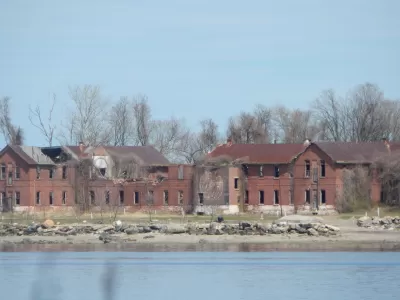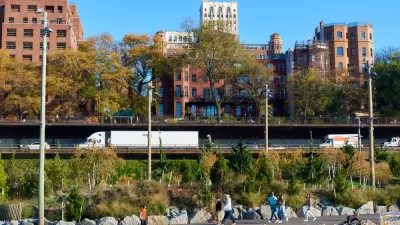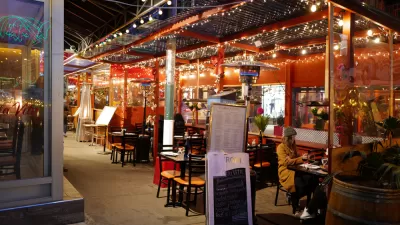Managed for decades by the Department of Corrections, the island could soon become a public park with regular ferry service and expanded visiting hours.

First used in 1869 as a public cemetery for unclaimed bodies and remains of the indigent, New York's Hart Island, home to the remains of over one million people and the nation's largest public cemetery, has a long-held reputation as the final resting place for the unidentified, the poor, and victims of epidemics like the 1918 flu pandemic and the AIDS crisis. During the height of the COVID-19 pandemic, as many as ten percent of New York's COVID victims were buried in one of the island's mass graves. Family members wanting to visit relatives' gravesites at the notorious 'potter's field' could choose one of two options, "both of which operate on predetermined schedules: monthly gazebo visits for any member of the public and monthly gravesite visits for family." Brody Ford reports on the effort to redesign the island, honoring the dead while making it a public amenity for the living.
After years of being managed by the state's Department of Corrections, Hart Island was handed over to the city's Parks Department this month. "Making it a more accessible and inviting space will be a challenge given the island’s deteriorating buildings, ongoing burials and the need to establish a regular ferry service to the island," writes Ford. "More than $50 million has been allocated for the destruction of many of these structures and creation of new burial space," and "[m]any advocates envision full public accessibility with a museum to honor generations of often marginalized and forgotten New Yorkers."
For visitors like Kimberly Overton, the transition is promising. "It was nice to see a park ranger uniform and not a correctional officer," she said, but her visit was still guided by strict rules. The Parks department says they are still "determining what public access looks like post-pandemic," weighing plans to increase public access with the need to maintain the island's role as an active municipal cemetery. "The Parks Department is waiting on a city study of burial capacity before sketching up further plans, and a framework to improve transportation access is due next year."
FULL STORY: The Biggest Public Graveyard in the U.S. Is Becoming a Park

Planetizen Federal Action Tracker
A weekly monitor of how Trump’s orders and actions are impacting planners and planning in America.

Maui's Vacation Rental Debate Turns Ugly
Verbal attacks, misinformation campaigns and fistfights plague a high-stakes debate to convert thousands of vacation rentals into long-term housing.

San Francisco Suspends Traffic Calming Amidst Record Deaths
Citing “a challenging fiscal landscape,” the city will cease the program on the heels of 42 traffic deaths, including 24 pedestrians.

Defunct Pittsburgh Power Plant to Become Residential Tower
A decommissioned steam heat plant will be redeveloped into almost 100 affordable housing units.

Trump Prompts Restructuring of Transportation Research Board in “Unprecedented Overreach”
The TRB has eliminated more than half of its committees including those focused on climate, equity, and cities.

Amtrak Rolls Out New Orleans to Alabama “Mardi Gras” Train
The new service will operate morning and evening departures between Mobile and New Orleans.
Urban Design for Planners 1: Software Tools
This six-course series explores essential urban design concepts using open source software and equips planners with the tools they need to participate fully in the urban design process.
Planning for Universal Design
Learn the tools for implementing Universal Design in planning regulations.
Heyer Gruel & Associates PA
JM Goldson LLC
Custer County Colorado
City of Camden Redevelopment Agency
City of Astoria
Transportation Research & Education Center (TREC) at Portland State University
Jefferson Parish Government
Camden Redevelopment Agency
City of Claremont





























